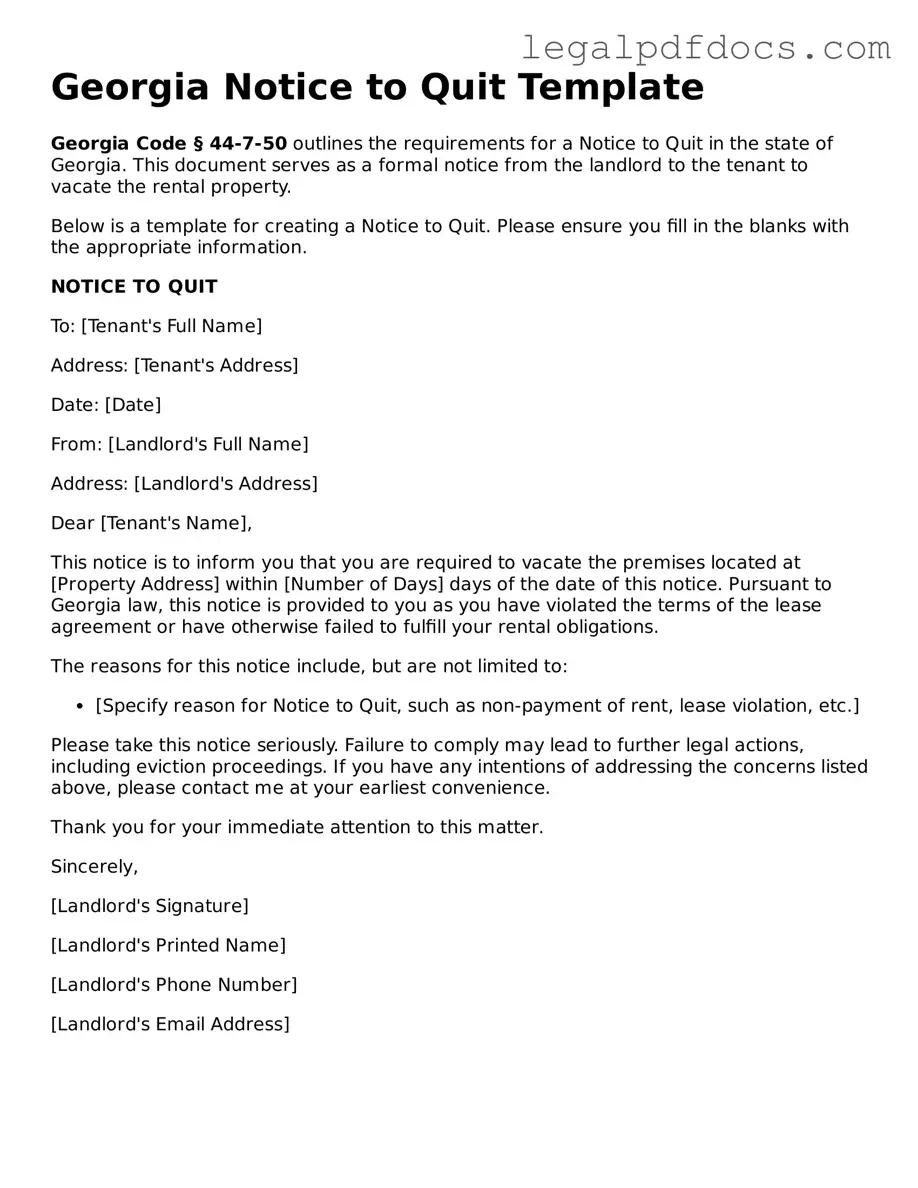Official Notice to Quit Form for Georgia
The Georgia Notice to Quit form is an essential document used by landlords to formally request that tenants vacate a rental property. This notice serves as a crucial first step in the eviction process, providing tenants with clear information about their lease termination. Understanding how to properly complete and deliver this form can help ensure a smoother transition for both parties involved.
Ready to fill out the Georgia Notice to Quit form? Click the button below to get started!
Open Notice to Quit Editor Here
